EXTREME SACRAMENTO
Posted on July 4, 2011 – 5:05 PM | by AdminGiven that there is a natural fascination with superlatives- the first, the biggest, the most, the worst, etc, it is surprising how little we knew about the extremes in our own home town. It didn’t take much prodding to get us to explore the idea, and we set out to track down Sacramento’s superlatives and report back. We had one standard: all results had to be quantifiable either by date, number or other measurable factor. Here’s what we came up with.
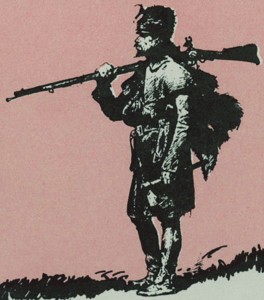 First Non-Native Visitor to Sacramento
First Non-Native Visitor to Sacramento
Lieutenant Gabriel Moraga first identified the Sacramento River in 1808, naming it the Jesus Maria. He led another expedition up the river in 1811, but didn’t get much farther than present-day Rio Vista. In 1821, Captain Luis Arguello navigated the Sacramento all the way to the mouth of the Feather River, and Russian explorer Otto von Kotzebue navigated the frigate Enterprise to the site of Freeport in 1824. But the first non-native visitor to Sacramento proper was probably New York born mountain man Jedediah Smith, whose 1826 trapping expedition from the Sacramento River to the site of Folsom prompted the Mexican governor to name the river Smith’s party followed the Rio de los Americanos or “American River.” The bike trail following the route bears Smith’s name today. A later trapping expedition in 1833 introduced another foreign visitor: a virulent malaria epidemic that killed an estimated twenty thousand natives by the end of the year.
When John Sutter landed on the banks of the American River near the present-day site of the B Street Theatre in 1839, he chose a spot above floodwaters and near existing trade routes used by trappers since Jedediah Smith. As a naturalized Mexican citizen, his land grant made Sutter the ruler of Mexico’s first inland settlement in California. The adobe fort served as a military base, trading post, and, despite the Mexican government’s wishes, an entry point for illegal immigrants from the United States. Sutter’s power was based on the land grant, a lack of competition, and his ability to dominate the local Nisenan villagers. The Gold Rush spelled the end of Sutter’s empire, and the soft adobe walls crumbled not long after Sutter’s fortunes. Except for the central building, today’s Sutter’s Fort is a reconstruction, completed in 1891-1893.
The J. Neely Johnson House at 1029 F Street is Sacramento’s oldest home, and the only standing example of a Greek Revival style home in Sacramento. Originally built for William Cozzens in 1853, it was first inhabited by Seldon McMeans, California State Treasurer, who bought it in 1854. McMeans founded the California branch of the “Know-Nothing” Party, an anti-immigrant party that considered Irish and Germans too foreign to ever become American. J. Neely Johnson, California’s youngest governor and the only “Know-Nothing” governor in American history, lived there in 1855. David Terry, a California Supreme Court justice, lived there from 1856 to 1860. He tried to legalize slavery in California, and fled the state after shooting State Senator (and abolitionist) David Broderick in a duel. After fighting for the South in the Civil War, Terry was shot dead when he assaulted a Supreme Court justice in Lathrop, CA in 1889. The home has survived fire, floods, vandalism, redevelopment and at least one attempt at unauthorized demolition. Today, it is almost completely restored to its former grandeur, and owned by much nicer people.
Oldest Registered Burial
Sutter’s Fort had a small unofficial cemetery near K Street and 28th, some of whose residents were unearthed by Sutter Hospital expansion in recent years. The first registered burial in the city of Sacramento’s Old City Cemetery was Captain James Homans of the U.S. Navy, who died on July 20, 1849. Originally located near the front of the cemetery, his wife relocated him to another site in 1858 when their son died, so they could share a common plot. Captain Homans’ headstone bears evidence of vandalism but still stands inside the cemetery today.
In early 1852, Henry Wells and William Fargo created a banking/express stop at Second Street near J, establishing what is technically Sacramento’s longest-existing business. Today, storefronts for the publicly traded Wells Fargo & Company dot the landscape as frequently as a Starbucks Coffeehouse. Amador Stage Lines and their fleet of green casino-bound buses, also boasts Gold Rush roots. According to their website, they were “established in 1852 as a stagecoach line carrying passengers from the paddle wheelers in Sacramento to the communities in the Gold Country of the Northern California foothills.” With headquarters on C Street and an office in Reno, the transportation company still delivers gamblers to promises of wealth in the hills. The McClatchy Corporation, aka the Sacramento Bee, got its start in 1857, but turned big-time in the late 20th century and today, barely remains in the clutches of the McClatchy family. This leaves us then, with Burnett and Sons Planing Mill & Lumber Co. Established in 1869, the local business is unspoiled by mergers, expansion, or corporate takeover. It started in Sacramento, never left Sacramento, and still belongs to descendants of the Burnett family. The company produces custom milled wood products and family members, including former Sacramento Mayor Burnett Miller, are long-time supporters of the city’s arts and history scenes. As one longtime resident states, “Calling Burnett and Sons the oldest business might not be right technically, but ethically it’s the right thing to do.”
Despite the fact that country was in a recession at the time – or maybe because of it – Sacramento’s first and second professional sports teams were formed within a few months of each other in 1886. 125 years ago on June 26, The Capitol City Wheelman bicycling team was formed. They held races at Agricultural Park between B & G and 20th &22nd and also competed in Stockton and San Jose. They were a politically active group whose main focus was road improvements. When pavement came to town, 105 cyclists (20% of the estimated riders at the time) rode around downtown carrying lanterns in celebration. They however, were not Sacramento’s first sports team. That honor belongs to the Sacramento Gilt Edge Base Ball (two words back then) Team, who had begun playing games a few months earlier that spring. They were sponsored by Ruhstaller Brewery and named after Gilt Edge Beer. They played also played at Agricultural Park until the games moved to Snowflake Park (between S and R, 28th and 30th) which was named after a whiskey. Drinking and bball what a nice way to spend a hot Sacramento night! Especially if the home team is winning and they did – the Gilt Edge were California league champs in 1898, ’99 and 1900.
And the winner is… the Wells Fargo Center at Capitol Mall, scraping the sky at 423 ft. Built between 1990 and 1992, it stands tallest of allest, and takes up an entire 2.3 acre city block! The developers of this project were Hellmuth, Obata, and Kassabaum, and they have some noteworthy tenants outside of Wells Fargo including the popular Il Fornaio Italian restaurant and bakery. Silver medal goes to US Bank Tower at 402 ft, and the bronze belongs to Bank of the West Tower, towering at 396 ft. The first Sacramento skyscraper is now occupied by the Citizen Hotel, which was built in 1925 and has been bumped down to #15 on the tallest buildings of Sacramento list.
Highest Point
Most of Sacramento sits at around 44 feet above Sea Level. There is a 75 foot hill on Haggin Oaks golf course, but its probably manmade; to be honest, we didn’t really have time to look into that. The highest non golf course point is near the corner of Albatross Way & Helena Avenue: 52 feet.
Lowest Point
There is a part of town that is right at sea level in the southern-most part of the city, but it’s really industrial/agricultural land and might spend parts of the year under water. Maybe MidMo could pay of a recon flight? It’s on an unnamed road, but it’s here: (-121.474, 38.454). Just paste those coordinates (including the negative sign) into google maps. The second lowest point (at 4 feet above sea level) is About 200 feet east of the intersection of Gloria Drive and Cedar River Way.
Alcohol prohibition ends in the United States, December 5, 1933. Citizens of Sacramento rejoice, except, sadly, there is no place for them to celebrate legally. A few short months later, Bill Bordisso opens the doors of the venerable Old Ironsides after procuring the first liquor license in both the city and county of Sacramento. Originally a grocery store, the historic building once sported a horse trough out front and later a bottle shop next door. The horse trough and bottle shop are now long gone, but the finest of adult beverages are still easily procured.
Richest Sacramentan
According to the 2010 Forbes’ Magazine list “The World’s Billionaires,” both Buzz Oates and Joyce Raley Teel are worth about a billion. Teel ranks higher (#937) since her fortune is increasing, while Oates (#1062) seems to be remaining steady. That fits the view from here too; Buzz Oates seems to be sitting back, managing properties and doing some good works with his dough while Teel has put the pedal to the medal with her arts philanthropy. The Teel Family Foundation donated a whopping $14 million dollars to the capital campaign for the Crocker expansion (aptly named the Teel Family Pavilion) – more than any other donor. And, if that isn’t interesting enough, Teel has something else Oates just doesn’t have: an archenemy.
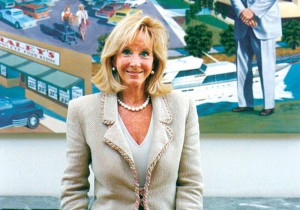 Well, not just one – several members of the Norby family are actively trying to take Teel down a peg via raleysexposed.com, a truly bizarre internet campaign (set to the soundtrack of Kansas’ “Dust on the Wind”). The Norbys claim that Teel’s (deceased) father, Tom Raley, founder of the Raley’s supermarket chain, owes his fortune to Charles Norby, their (also deceased) father. The Norby’s filed suit, lost bigtime, and decided that a crackpot internet campaign was the best way to go from there. The alleged offense happened while Joyce Raley Teel was a stay at home mother, but then again, richest Sacramentan. Good for Sacramento that she, not her wingnut foes, has the cash and that she gives it away to good causes. In addition to the funds for the new Crocker, she also gave five million to a future E. Claire Raley Studio for the Performing Arts, and she also gives generously to the Society for the Blind and the fight against breast cancer. I wonder what her adversaries would’ve given Sacramento if they had gotten the money they think they deserve?
Well, not just one – several members of the Norby family are actively trying to take Teel down a peg via raleysexposed.com, a truly bizarre internet campaign (set to the soundtrack of Kansas’ “Dust on the Wind”). The Norbys claim that Teel’s (deceased) father, Tom Raley, founder of the Raley’s supermarket chain, owes his fortune to Charles Norby, their (also deceased) father. The Norby’s filed suit, lost bigtime, and decided that a crackpot internet campaign was the best way to go from there. The alleged offense happened while Joyce Raley Teel was a stay at home mother, but then again, richest Sacramentan. Good for Sacramento that she, not her wingnut foes, has the cash and that she gives it away to good causes. In addition to the funds for the new Crocker, she also gave five million to a future E. Claire Raley Studio for the Performing Arts, and she also gives generously to the Society for the Blind and the fight against breast cancer. I wonder what her adversaries would’ve given Sacramento if they had gotten the money they think they deserve?
The accolade of Sacramento’s Most Successful Artist unquestionably belongs to Wayne Theibaud. In May, Pies, A 1961 painting sold for just over four million dollars in a Sotheby auction, while seventeen other paintings offered brought in a grand total over twenty three million. An earlier Theibaud painting was purchased for four and a half million some years ago by New York’s National Gallery of Art and just last year he was named to the California Hall of Fame. Contemporaries such as Gregory Kondos, Mel Ramos and Stephen Kaltenbach are notable, but none has achieved anything near the stature of Theibaud.
Born in Arizona and raised in Long Beach, Theibaud worked in New York and Hollywood as a cartoonist and ad designer before serving in the Army during World War II. After the war Thiebaud studied art at San Jose State College and California State University. He taught art at Sacramento City College and later at the University of California at Davis. It was a 1962 exhibition at New York’s Sidney Janis Gallery that made Thiebaud a star. The artist’s heavily pigmented, brightly colored renderings of pies, cakes and candy were a perfect fit for the burgeoning Pop Art scene, and he has been an internationally-known artist since shortly after that 1962 show. Though best known for his pop art subject matter, his figures, landscapes and streetscapes have also won high acclaim. At age ninety, the reputation of this iconic, towering figure grows continues to grow.
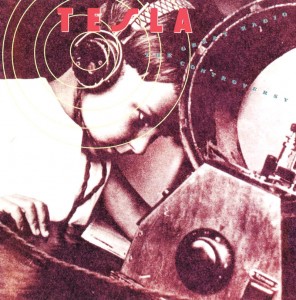 Best Selling Record by a Sacramento Band
Best Selling Record by a Sacramento Band
Many a successful band has hailed from Sacramento, but since we’re talking superlatives, Tesla holds the record for Sacramento’s most successful album attempt, so far. The bluesy hard rock group has released seven albums between 1984 and 2008, and has sold 14 million records cumulatively. The Great Radio Controversy was recorded in 1989 by Geffen and went double platinum in 1998. “Love Song” climbed to #7 on the Mainstream Rock Tracks chart- Tesla would not be the category victor if we were discussing the most popular song ever to come out of Sacramento.
Deftones racked in the record sales, too, with White Pony, a y2k metal album that went platinum in 2002. And Cake holds an interesting record sales-related record: lowest selling #1 album. With album sales in general continually sinking, Cake was able to pull of the #1 spot with a mere 44,000 copies of Showroom of Compassion (2011) sold. Cake also would be the aforementioned victor of Sacramento’s most popular song ever contest with “Going the Distance” which, in 1996, topped out at #4 on the Mainstream Rock Tracks chart.
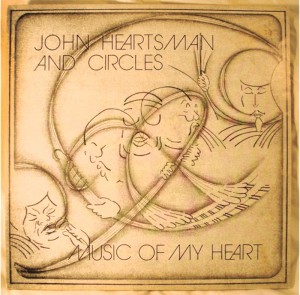 Most Valuable Sacramento Record
Most Valuable Sacramento Record
The first rule of rare vinyl is to not talk about rare vinyl. At least, that’s what we learned as we researched the much-speculated-about rare, collectible and valuable Sacramento-connected records. John Heartsman and Circles aren’t from Sacramento, but one-half of their sought-after double album, Music of my Heart, is. Heartsman was a mainstay on the Sacramento blues scene in the 1980s and ‘90s but in the ‘50s and ‘60s he was a bay area based multi-instrumentalist session player who was featured on dozens of R&B and blues records. In the late ‘60s he retreated to Modesto where he supported himself playing small venues. In 1976, he recorded half of the funky jazz/soul obscurity Music of my Heart at Basin Street West in Sacramento. It was engineered by David Houston and a small number of copies were released as a “private press” (not a professional label). This record is #4 on the Jazzman “Holy Grail” series of valuable records, and has brought as much as $5500 at an online auction.
A close runner-up is the only single by the Broderick (now West Sacramento) garage rock group, The Knightsmen. A popular Midniters-styled band, they recorded two tracks at Sacramento’s Ikon Studios in 1966. The tracks were released as an incredibly limited pressing 45: “Daddy Was a Rolling Stone” b/w “Fever.” Only one copy of this record has ever been found, and it sold almost instantly for $5000.
At $90 for 30 grams, Café Americain’s serving of Sterling imperial caviar tops this category. Café Americain owner Mike Wahba explains that Sterling caviar, which is produced from locally-farmed sturgeon, is a “very well-known product, and is high-end and reputable.” Sterling produces three grades of sturgeon caviar: classic, royal and imperial; imperial is the most expensive. The classic grade eggs are the smallest, and the royal and imperial grades are the largest, firmest eggs. The only difference between the royal and the imperial (besides 15 bucks) is the color: imperial are a greenish-golden color instead of dull black. The serving comes with blinis and crème fraiche; it’s a great way to sample this storied delicacy without harming the endangered wild sturgeon.
Hands down, no contest, Sacramento’s biggest employer is the State of California. That should come as no surprise to anyone who lives here – odds are you’ll have a mother, father, brother, sister or cousin (or all of the above) who works for the state. Oh yeah, and you probably do, too. Even with Governor Brown’s hiring freeze and the spate of recent retires, there are still 72,670 state employees who live in Sacramento County- as of May 31, 2011.
While the late Dorothea Puente is undoubtedly Sacramento’s most notorious killer, she is, in all likelihood, not the most deadly. Though she is believed to have been involved in up to nine deaths, Puente was convicted of just three murders. Ironically, Puente’s case diverted attention from another Sacramento serial killer who was also hiding remains at his own home. In April 1987, just a year before bodies were discovered in Puente’s yard, Oak Park handyman Morris Solomon was arrested and charged in the murders of seven women whose bodies were discovered at properties Solomon lived at or frequented. In 1991 he was convicted of six of the murders, but his case was overshadowed by Puente’s notoriety and his crimes are relatively unknown. He is currently on death row in San Quentin. Yet another potential candidate for Most Deadly Serial Killer is the so called ‘Mad Killer’ who ravaged Sacramento in 1941 and is believed to have killed eight victims before disappearing, uncaught.
 Fittingly, the apparent topper in this category is perhaps the most repugnant: Gerald Gallego, who, along with wife Charlene, killed at least ten victims over a two year period. The couple began their killing spree in September 10, 1978, kidnapping, raping and brutally murdering Rhonda Scheffler and Kippi Vaught, two young girls they enticed into the back of a van at the Country Club Plaza shopping mall. Turning their seemingly quiet tract home into a sadistic dungeon for sex slaves, the Gallegos went on a rampage for 26 months, kidnapping and killing eight more victims. Their terror spree ended on November 17, 1980 when they were apprehended as suspects in the murders of Craig Miller and Mary Elizabeth Sowers after one of Miller’s friends identified Gerald Gallegos as being in the car he had seen the couple get into the night of their murder. Charlene pled guilty to the last murders and agreed to testify against Gerald – he was sentenced to death in both California and Nevada, but died of rectal cancer while on death row. Charlene Gallego served sixteen years and eight months in prison and was released in 1997.
Fittingly, the apparent topper in this category is perhaps the most repugnant: Gerald Gallego, who, along with wife Charlene, killed at least ten victims over a two year period. The couple began their killing spree in September 10, 1978, kidnapping, raping and brutally murdering Rhonda Scheffler and Kippi Vaught, two young girls they enticed into the back of a van at the Country Club Plaza shopping mall. Turning their seemingly quiet tract home into a sadistic dungeon for sex slaves, the Gallegos went on a rampage for 26 months, kidnapping and killing eight more victims. Their terror spree ended on November 17, 1980 when they were apprehended as suspects in the murders of Craig Miller and Mary Elizabeth Sowers after one of Miller’s friends identified Gerald Gallegos as being in the car he had seen the couple get into the night of their murder. Charlene pled guilty to the last murders and agreed to testify against Gerald – he was sentenced to death in both California and Nevada, but died of rectal cancer while on death row. Charlene Gallego served sixteen years and eight months in prison and was released in 1997.



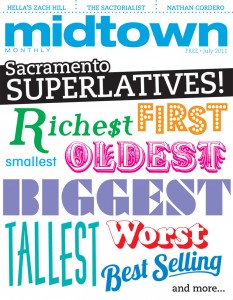
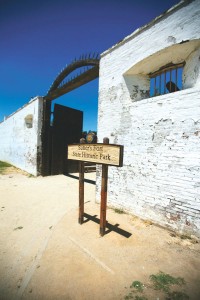
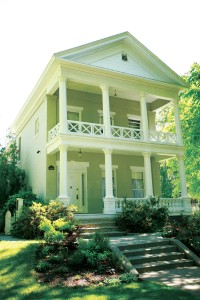
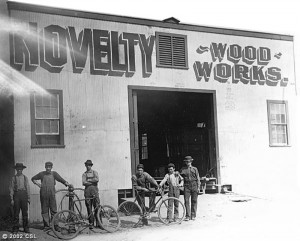
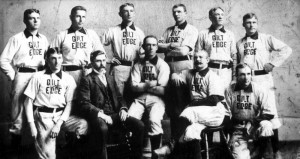
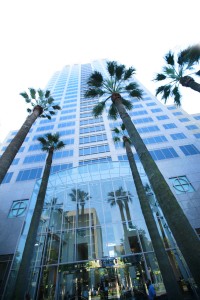
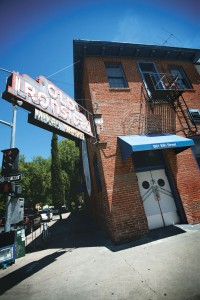
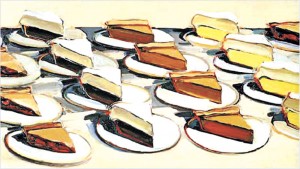

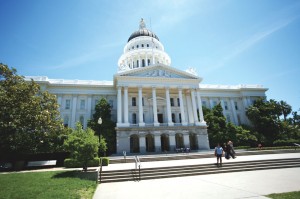
4 Responses to “EXTREME SACRAMENTO”
By Alan O'Connor on Jul 11, 2011 | Reply
The “First Sports Team” portion of this article is incorrect. The first professional baseball team in Sacramento was the 1886 Sacramento Altas. The Gilt Edge came along in 1898.
By Gee Whiz on Jul 12, 2011 | Reply
The Altas were before the Gilt Edge, but as far as I could tell, they didn’t play in an organized league with teams from outside the city.
By Gee Whiz on Jul 12, 2011 | Reply
As far as I could tell. I did consult your book sir! The article should be titled “First professional Sports Team.”
By Alan O'Connor on Jul 12, 2011 | Reply
The California League was the first professional baseball league on the west coast beginning in 1883. The Sacramento Altas were asked to join the California League in 1886 and played against three teams from San Francisco, Haverlys, Pioneers & Stars, and the Oakland Greenhood and Morans. The Altas finished second that year with a 17-14 record.